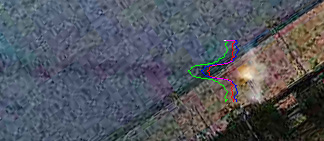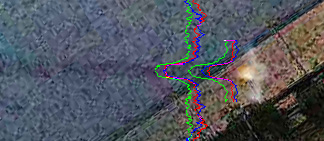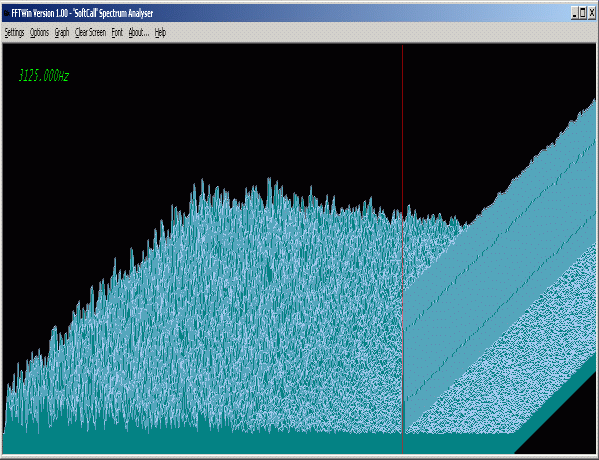Posted: Fri Dec 10, 2004 7:29 pm
Please see my bat picture on page 69.Luis wrote:Why is the image of the bug white?
APOD and General Astronomy Discussion Forum
https://asterisk.apod.com/
Please see my bat picture on page 69.Luis wrote:Why is the image of the bug white?
What you're calling a "small ignition" is just the body of the bug itself, very briefly lit up by the flash. About the straight line - have you ever seen the images of the "Roswell Rods"? If you piece together several of those, you can see long distances of straight bug flight.Guest1 wrote:I find it hard to believe that a bug could not only fly such a straight line for such a distance but also that it would just happen to be in-line with location of the small ignition.
CurtC wrote:What you're calling a "small ignition" is just the body of the bug itself, very briefly lit up by the flash. About the straight line - have you ever seen the images of the "Roswell Rods"? If you piece together several of those, you can see long distances of straight bug flight.Guest1 wrote:I find it hard to believe that a bug could not only fly such a straight line for such a distance but also that it would just happen to be in-line with location of the small ignition.
I firefly would have a streaked image because the pulse of their light is very slow. It would streak with the motion of the insect.pshisbey wrote: But as we all know, the bodies of fireflys can light up without aid of a camera flash.
Can you please poing out this ionization trail more specifically?guessing wrote:This has probably been said previously in this post. Who cares right?
Ok if you will look carefully at the before picture on a high res monitor you can see the ionization trail shooting up into the storm cloud. The ionization cloud is the beggining of lighting. between shots the lightning formed the "light" portion then on the shadow pic your catching the result of the strike. Remember lighting strikes up not down. The after pic is the air vaporization trail after the lightning has disipated. There was no damage to the light fixture because it is grounded. The light bulb isn't working because the filliment was blown by the lightning voltage.
Here is another 3-frame animation with the 2nd and 3rd shots plus diff shot:zoltan wrote:Diffit: Could you do the same processing on the third image (actual after) that you did on the first two in the animation? I'm curious to see if the trail is there as well.....maybe this would add support to the camera artifact theory....the flash of the lamp simply brought it out more.
-z

It's probably not necessary now that other people have done fancier analysis like FFTs, but I would think a better indication would be to sum/normalize/replicate the pixel rows parallel to the body trail. This might average out the noise but leave dimmer bands parallel to the trail with each wing beat.hazeii3 wrote: In theory, if the trail is caused by an insect, the wings should have slightly darkened the area to either side of the obvious 'body' trail. To test this, I summed the rows of pixels in a direction parallel to the trail, then normalised the resultant value and replicated it along the pixel row. The expected effect would be to reveal the slight dimming caused by the wings - however, this is not readily apparent.

You inspired me. I took the original image (not one of the difference pictures), rotatee it counterclockwise 33.6 degrees and selected only that portion of the flight path that is passing over evenly colored background. This consistet of two rather significant pieces. I butted these pieces against each other and changed from 8 bit to 16 bit mode in order for subsequent steps to get the precision desired. Next I resized to 1 pixel wide (this essentially sums up the rows). Then I resized to 256 pixels so that my filter that builds a line profile would work. Before I applied the filter, though, I pasted an upside down copy of this image onto itself with normal blend mode to cancel out the gradual change in brightness seen in the background.cdsmith wrote:It's probably not necessary now that other people have done fancier analysis like FFTs, but I would think a better indication would be to sum/normalize/replicate the pixel rows parallel to the body trail. This might average out the noise but leave dimmer bands parallel to the trail with each wing beat.hazeii3 wrote: In theory, if the trail is caused by an insect, the wings should have slightly darkened the area to either side of the obvious 'body' trail. To test this, I summed the rows of pixels in a direction parallel to the trail, then normalised the resultant value and replicated it along the pixel row. The expected effect would be to reveal the slight dimming caused by the wings - however, this is not readily apparent.


Here it is.victorengel wrote:I'll repeat this with a wider selection.


Maybe I see something. I used the measuring tool and see something pulsing every 121 pixels. Can FFT guy identify 121 pixels on his chart?nobodyimportant wrote: Is it just me or does it appear that there is a slight arc to the streak?
Some have suggested that, but if you load shot #2 into drawing software and draw a straight line along the path, the streak is very straight. Look at the blinking (certainly straight) line on this rotated crop of the diff image:nobodyimportant wrote:Is it just me or does it appear that there is a slight arc to the streak?

This is one of the most common one line explanations that haveAnonymous wrote:I agree with the two previuos posters that this is the
shadow of a contrail. I live on one of the major air traffic routes on the
east coast of the US and see these same kinds of streaks on a regular basis.
Bill
I agree in general with your comments regarding contrail shadows, but not this one. Long contrails will not dissipate in 15 seconds, but their shadows can do so very easily. All it takes is for the Sun to go behind a cloud (which can happen even if it has already set), or for the contrail to move enough that the viewer is swept out of its shadow plane. And even crooked, raspy contrails generally produce very clean, straight shadows, since the shadow is usually a forshortened projection of the contrail.Ernst Lippe wrote:This is one of the most common one line explanations that have
given many times in this discussion. It has several drawbacks:
It also does not explain why the streak is not visible on the other
photo's. The next picture that was taken only 15 seconds later does not show
any sign of it. This is only reasonable when there is a lot of turbulence in
the air, but in that case it is very unlikely that the contrail would be so
uniform, essentially it appears to be undisrupted across its entire length.
I'm not clear what you're suggesting....because you mention wing beats,are you suggesting summing the pixels perpendicular to the trail? It's certainly a nice idea - I tried it, and took an FFT of the result (btw, the other FFT stuff was me too) However, there was still no sign of a periodic signal. Possibly a better approach would be to take the FFT's of the pixel strips first and then sum the FFT's; that way any phase difference between the strips wouldn't affect the result. Essentially, it would be equivalent to lengthwise summing of the data in the following image (which is a 3D representation of the FFT's of a 200-pixel strip centred on the trail).cdsmith wrote:
It's probably not necessary now that other people have done fancier analysis like FFTs, but I would think a better indication would be to sum/normalize/replicate the pixel rows parallel to the body trail. This might average out the noise but leave dimmer bands parallel to the trail with each wing beat.
